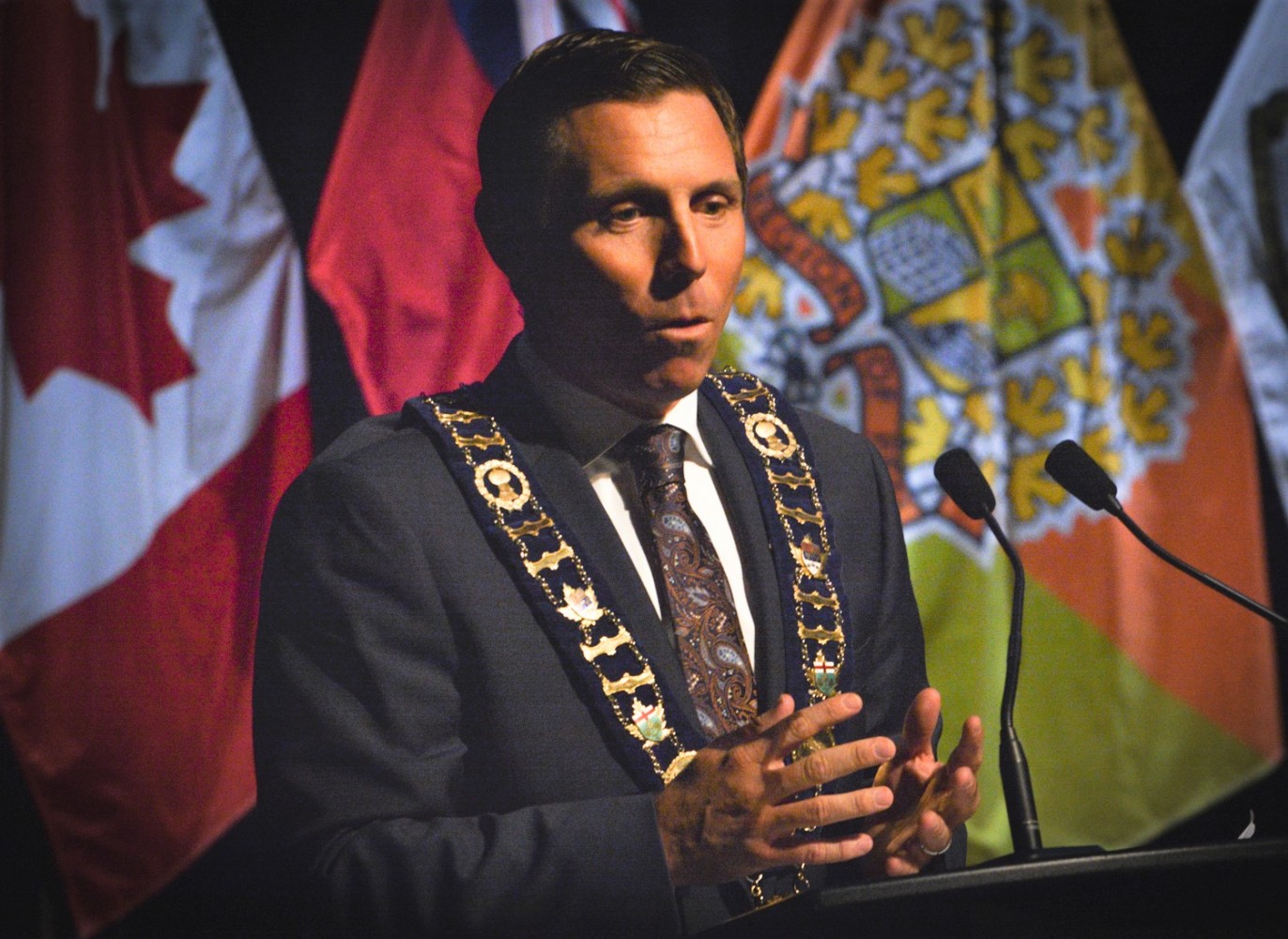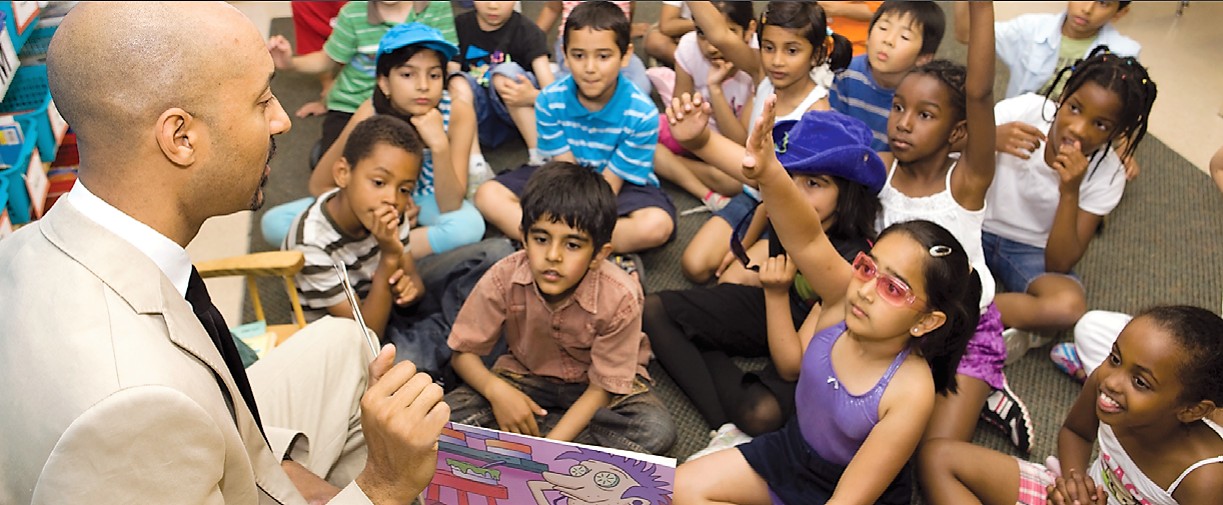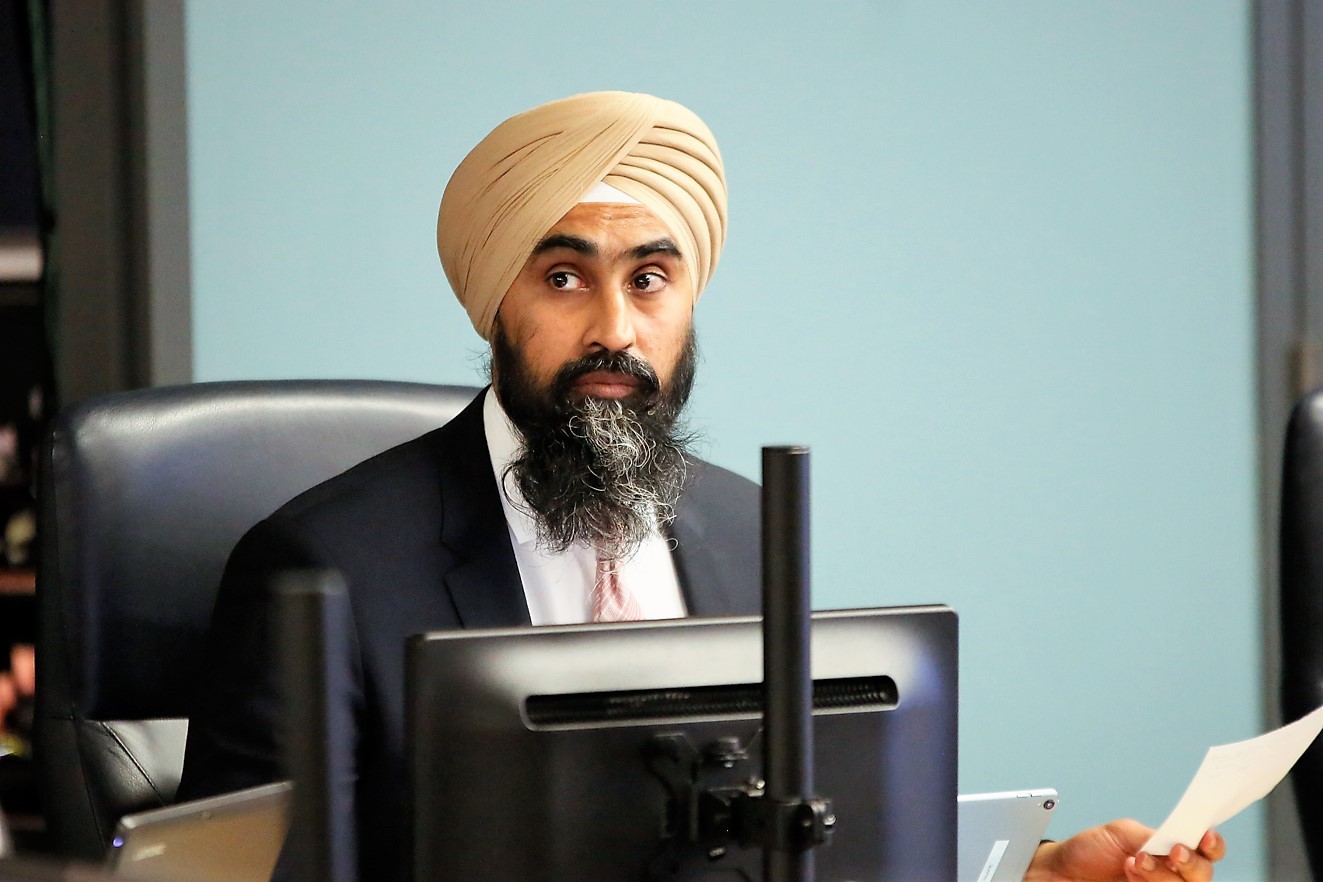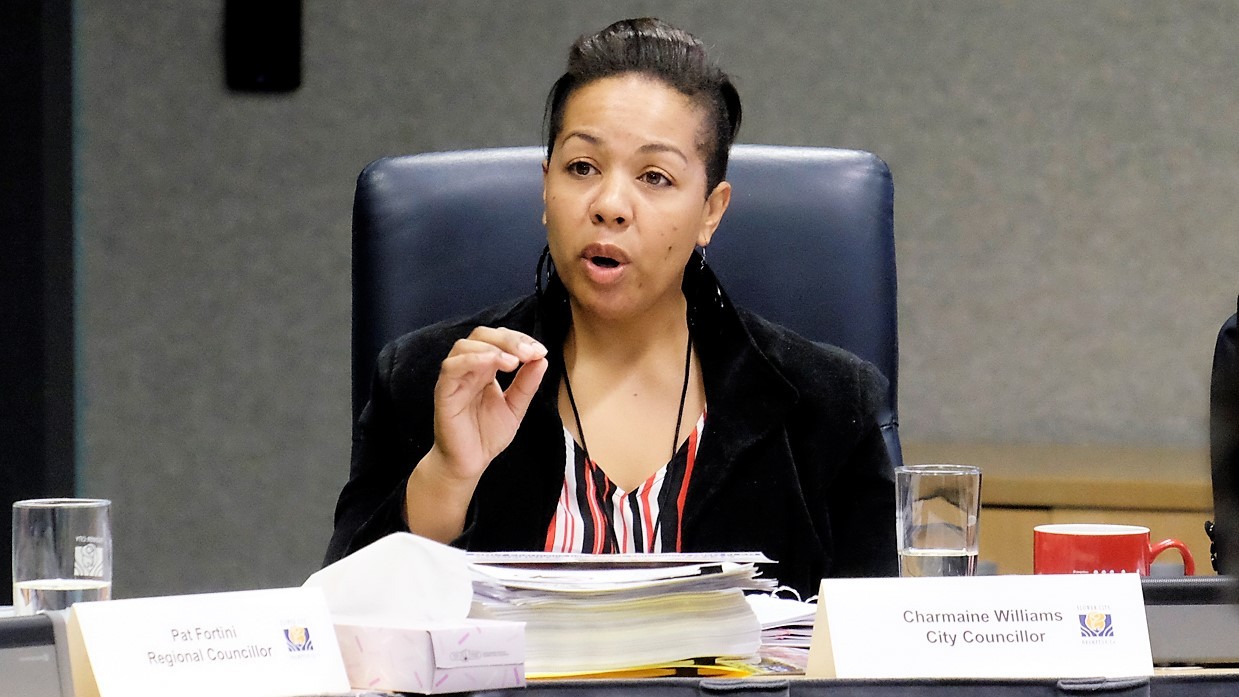
Mayor Brown, those living in glass houses shouldn’t throw stones
The post-war Canada that many of Brampton’s aging population grew up in was nearly 100 percent white, Anglo-Saxon and Christian.
That place has evaporated into the ether faster than a cold rain falling on hot pavement.
Brampton now boasts 234 cultures and 115 languages, and a population that has shot up by more than 1,300 percent between 1970 and 2016. At last count, 74 percent of us are visible minorities – a rich mix of races, and a kaleidoscope of cultures.

This diaspora brings with it a multitude of faiths. Many proudly wear the symbols of their beliefs in the form of turbans, hijabs, yarmulkes, kirpans etc.
This new demographic order has infused the city with what urbanists call the animating energy of people. The unintended global ascent of many of the world’s great cities has been driven by this force, a type of momentum that homogenous places withering in their traditions experience as inertia.
While some pine to keep things as they have long been, little dynamism and innovation springs forward from such conditions.
Cities, regions and entire nations see the rich rewards offered up by those of different faiths and the collision of people contributing new ideas while we’re all pushed to do better.
The one jurisdiction in our country that doesn’t seem to be onboard is Quebec, home to Bill 21. It’s basically a ban on religious symbols being worn by workers in the public sector. The bill will impact primary and secondary school teachers, police officers, judges and others in the course of their duties.
The bill is the brainchild of the Coalition Avenir Québec (CAQ) and its leader and premier, François Legault. Bill 21 fulfills a promise made during last year’s election campaign, and the premier says the “vast majority” of Quebecers support his decision.
The bill has been met with fierce opposition and outright disgust, and for critics, it seems to bump up against the very fundamentals of the Canadian Charter of Rights and Freedoms.
The opposition comes from both sides of the spectrum, secular and faith-based. But as Legault points out, the opposition among francophones, isn’t as broad as you might expect. While a Léger poll found that almost 80 percent of anglophones in Quebec want to live in a religiously diverse society, polls consistently showed that an even higher percentage of francophones supported Bill 21, while overall about two-thirds of the province’s residents supported the new legislation.
Have the worst elements of xenophobia and the race-tinged policies of the Trump administration in Washington bled across our border, and is Bill 21 simply part of a sentiment that is gaining traction here?
“It would be false to claim that all Quebecers are racists because they’re in favour of the bill,” says Léger’s executive vice-president Christian Bourque.
The impact of the bill has now made its way to the council chambers at city hall in Brampton. The catalyst for all this? Mayor Patrick Brown. The chief executive of the city tabled two motions last week that basically urged us to join in the legal challenge against the bill and to offer up our city’s institutions to those impacted by it – to send those aggrieved souls in Quebec a ‘Get Out of Jail’ card.
Brown wants this city to actively recruit Quebecers affected by the Bill to seek out a career here in emergency services. We should advertise in Quebec to promote careers in our Fire Department. He was quoted by CTV Montreal as saying: “If we don’t stand up for religious freedom in Brampton which is the most culturally and diverse city in Canada, then who will?”
Has Quebec used fear to accelerate exclusion? Do religious symbols worn by workers really impede their duties or those of fellow employees? Does such an act of religious expression have public safety and other societal consequences? Do these types of beliefs create insidious forms of oppression while stripping away personal choice? If this bill is needed, then why not extend it to every workplace – both public and private?
One of the founding principles of Canada and the United States, is the separation of church and state. The architects of the Quebec bill say they want to keep the purity or “secularization” of the workplace.
Brampton takes action
While most council meetings at city hall draw a smattering of visitors to the public galleries or drive citizens to watch proceedings online, the debate on Bill 21 and the vote on Brown’s motions, drew the national press (CBC), a curious online audience, and some of the most well-known advocates for religious tolerance in Brampton and beyond.
On the surface, the motions seem noble, and the debate was emotionally charged. But Wednesday’s meeting also raised serious questions about this city’s intent.
Was Brampton council punching way above its weight class?
Should those living in glass houses throw stones?
The answer to No. 1 is this: probably. This city is the third-tier of government that has zero jurisdiction in our neighbouring province, while Quebec’s government has a duly elected province-wide mandate that has every right to pass legislation it deems suitable. Outside of Brown none of our council members have any higher-level government experience, few if any have ever done any legislative work in the complex diversity and inclusion space under the Canadian Charter and four are brand new to municipal politics.
The answer to No. 2 is more nuanced: it’s time Brampton solved its own diversity shortcomings – there are many – before it tries to impose its will on Quebec, or anyone else. Council members have had ample time now to address serious diversity shortcomings in the various Brampton organizations and institutions, including city hall, they have direct authority over, but have remained silent. However, as soon as the chance to score some easy political points by throwing stones across the border into Quebec came about, they were quick to pounce.
Why such a clear contradiction? Their claimed concern in Quebec prompted immediate action. But, for example, a recent diversity audit of Peel police that revealed shocking levels of discrimination and disturbing attitudes in one of the country’s most diverse regions, didn’t elicit a single word of condemnation or concern from Brampton council.
Some have suggested that the two motions voted on and passed by council (one unanimously), were pure publicity stunts, and can be used as a cynical tool to patronize our diverse population base, while offering only faint (and purely symbolic) assistance to critics of the bill. Meanwhile, those same groups in Brampton being patronized with false concern, are left wondering why their members can’t get jobs in the city’s vast number of public institutions.
But, under one of the motions passed Wednesday, council wants to spend their tax dollars to advertise in Quebec so residents there can get jobs with Brampton’s fire department. How has that department done in recruiting and hiring among Brampton’s own religious minority groups? Is anyone on Brampton council going to find out and if the statistics show a deplorable track record, as many critics have suggested, will our elected officials show as much zeal in calling out our own institutions as they have toward Quebec? Will they demand change or sit on their hands, happy to throw stones from their own glass house?

Councillor Gurpreet Dhillon
If Brown thought the motions would urge condemnation against Bill 21, he was right. But in the end, the criticism was aimed back at himself. Ward 9 & 10 Regional Councillor Gurpreet Dhillon was laser focused on question No. 2: people in glass houses shouldn’t throw stones.
His criticisms of our own shortcomings in meeting diversity goals can’t be dismissed, he said, and his most memorable quote of the day was this: “Sorry for ruining a good PR day for everybody.”
Dhillon and Councillor Charmaine Williams took up the challenge. They asked what council plans to do in its own house.
An emotional response
We’ve seen worldwide examples of “othering” across the planet, especially over the U.S.-Mexico border. Parents separated from their children, kids in cages, and the iconic photo of a father and daughter lying face down dead in the Rio Grande River after trying unsuccessfully to swim to freedom, is now embedded in our collective consciousness.
The fact a legal and moral battle over the right to wear religious symbols has now reached into Canada, and has the support of many, is a signal that this country is not immune from all the tensions and emotions that massive immigration can evoke. It’s clear many don’t like the fact some of faith like to celebrate their beliefs 24 hours a day, even at work. Some see this as a bridge too far.
To those of faith, or to those who advocate for their religious communities, the venality of Bill 21 is clearly evident. Three of them took time to speak in front of council Wednesday. They all urged council to go forth with passage of the motions and hoped that it would send out a clear signal (even if only symbolic) that it’s okay to wear expressions of your faith while working.
Father Roman Galadza of St. Elias Ukrainian Catholic Church in Brampton supports a legal challenge to Bill 21. He stood before council wearing all the symbols of his office, including a crucifix, and said the bill would do nothing but “create religious wedges” amongst us.
Mustafa Farooq, director of the National Council for Canadian Muslims said Bill 21 is this country’s “biggest civil rights challenge.” He said it could put the brakes to years of hard-fought battles for civil liberties. He said the June 16 vote in Quebec “took us backwards.”
Jaskaran Sandhu, spokesperson for the World Sikh Organization, and a Brampton resident, said the WSO fully supported the motions brought forth in council, but also issued his own warning that this city is also facing “a moment for introspection.” With its huge population of visible minorities, which is not always reflected in the hiring practices of the police force or the fire department or city hall, this needs to be addressed, he said. “This is not a knock, it’s a challenge that we should step up to and tackle and show places like Quebec that we are not only talking the talk, but also walking the walk.”
Dhillon pointed out that he couldn’t be a teacher in Quebec or fill other posts in the public-sector with the police or the fire department. But he noted this is probably also true in Brampton. He said the internal equity audit conducted on Peel Police by the Canadian Centre for Diversity and Inclusion clearly exposed a force that has a mismatch in the percentage of visible minorities on the force (20 percent) and the those living in Peel region (65 percent; 74 percent in Brampton). There are no concrete numbers for Brampton Fire Department, but another audit, launched by the previous council, is currently underway on all municipal departments (also conducted by the CCDI, with results expected to be released this fall), and it could show this city is still playing catch-up in its hiring practices.
The fact the city is even advocating to advertise in Quebec for those adversely affected by Bill 21, irks Dhillon who urges the city to get its own house in order.
His Brampton-first movement isn’t based on some xenophobic policy to racially divide us, but by the practicalities of life in this city, circa 2019.
Closing the diversity gaps in our own hiring practices, especially in the Fire and police departments, is why Brampton council should be acutely focused on us, not on the province of Quebec. Only by fixing our own problems can we become a true advocate for change right across Canada. Why should taxpayers here foot the bill for a recruiting campaign in Quebec when the money is best spent to do the same in this city?
Dhillon said he wants to see an equity audit of all our city staffing, including at the senior levels. When he was hired in 2016, former chief administrative officer Harry Schlange promised to hire and promote in a way that reflects the city, with the best and brightest getting the opportunities they deserve. But after he hired senior staffers from Niagara Region, where he had worked, instead of bringing in staffers who knew and reflected Brampton, he was roundly criticized for the hypocrisy. This kind of nepotism, the hiring of those you know and feel comfortable with, creates the type of unintended discrimination that leaves a place like city hall, and other public institutions, looking remarkably unlike the rest of Brampton.
Brown noted that the CCDI diversity audit of city hall is well underway – a gift given to us by the last council.
The results of that audit and the implementation of a fairer plan going forward, would have added some much-needed gravitas to Brown’s argument for this city to partner with others in its resistance to Bill 21.
Brown says he welcomes the results of this city’s equity audit and wants it to be a benchmark.
If his inaction as a member of the Peel police board, remaining largely silent on the scathing diversity audit that showed the force has suffered from widespread discrimination, is an example, Brown might also sweep the city hall audit under the rug. It’s possible, however, that his unwillingness to speak out against the police department he oversees was just more conservative gamesmanship that has long demanded people like Brown appease the party’s rabid base of supporters in the large pro-police camp.
If he believes at all in real change, and wants to show that his words on Quebec aren’t empty, he will help improve the poor track record of diversity and inclusion in Peel police and other parts of the municipal civil service he has authority over. But if, for example, he supports hiring a new police chief who represents the status quo, it will be a clear sign that Brown is just the latest in a long line of politicians who uses diversity as nothing more than a convenient tool to fool voters.

Mayor Patrick Brown with Sikh Religious officials during his latest trip to India
The chance for leading by example has been “squandered”, said Dhillon. And it’s hard to argue.
Brampton’s bedrock is its inclusivity. We are the petri dish for diversity. But our battle to make our citizens feel they are all being treated fairly isn’t over – it’s just begun. It's a rueful reminder that we all have to play the long game to unlock the true potential of our dynamic and highly educated citizenry.
Taking a stand at council was Dhillon’s finest moment as a councillor. He has championed other important causes, such as his push during the last term to rebalance the city’s crippling property tax base with more commercial growth. But on Wednesday he spoke for a lot of taxpayers and families who simply want a fair chance in Brampton. The same people Brown appealed to when he desperately needed the city to salvage his crashing political career. Will he repay them with more than lip service?
Bill 21 looks and smells like a rearguard action – a turning back of the clock. Even the poll results are suspect since most of the population across Canada is still dominated by the post-war boomer demographic.
Brampton is still an outlier. It still doesn't look like the rest of Canada. But those demographic numbers are evaporating and younger generations are flexing their political muscle.
Many of faith say religious symbols are not an external add-on, but something that is very much a part of who they really think they are. Is denying them the right to wear them, or to look a certain way, just an attempt to deny people their identity, while strengthening that of others who feel threatened?
Brown is right when he says that Brampton “is ground zero” for diversity. But the gaps in our hiring practices for visible minorities have shown clearly that there is still plenty of work to do.
Sure, the council meeting on Wednesday made great theatre and got some airtime on TV and bold headlines from media that aren’t even present in Brampton, but love a good sound bite from savvy politicians who know how to fill empty space. You can only make important points about the evils of Bill 21, if your own jurisdiction is flawless, or working tirelessly to be that way.

Councillor Charmaine Williams
Other than Dhillon and Williams, the mayor and others on council exposed themselves to charges of blatant hypocrisy.
We will see if they drown that out with any real action in their own city.
Submit a correction about this story


